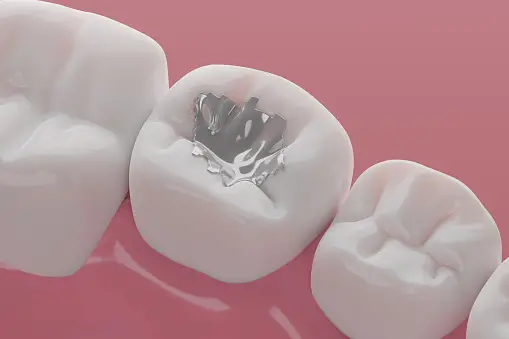
27 Jan How Long Does It Take To Get A Filling?
Everything You Need to Know About Getting a Filling
Fillings are perhaps one of the most common dental procedures for patients young and old. Used to treat a variety of issues, fillings are a simple procedure that takes place in the dentist’s office. However, because of this, many people are unsure how to plan their day surrounding an appointment for a filling. Why is the dentist recommending a filing in the first place? Does this procedure require several hours or is it a fast appointment?
How long does it take to get a filling? The duration of your appointment to get a filling will depend greatly on the location of your filling and the complexity of the issue being treated. Each dental practice will vary slightly in their procedure as well. However, most fillings take between ten minutes to one hour to complete from start to finish.
Even individuals with the healthiest of teeth may require a filling at some point in their lives. The good news is that this procedure is quick and painless! In this post, we will take a closer look at how fillings are used to treat a variety of issues with the teeth. We will also share some insight on what to expect when you arrive at your dentist’s office for your filling appointment.
What is a Dental Filling?
 A dental filling is a standard dental procedure used most commonly to treat small cavities in the teeth. However, dentists also use fillings to repair small cracks, chips, or fractures in the teeth. The dental filling procedure is quick and non-invasive. If a cavity has caused tooth damage, the dentist will first remove the affected area of the tooth. However, if a crack or fracture is the culprit, this process will not be necessary.
A dental filling is a standard dental procedure used most commonly to treat small cavities in the teeth. However, dentists also use fillings to repair small cracks, chips, or fractures in the teeth. The dental filling procedure is quick and non-invasive. If a cavity has caused tooth damage, the dentist will first remove the affected area of the tooth. However, if a crack or fracture is the culprit, this process will not be necessary.
Once the affected tooth is prepared for the filling, the dentist will repair the damage using a tooth-colored material. The most common material used for fillings today is composite resin. However, other filling materials are available including silver amalgam, glass ionomer, gold, and ceramic, to name a few.
After bonding the filling to your natural tooth, the dentist will polish the restoration material, removing any bumps or ledges. The result is a strong, healthy tooth that is restored in both function and durability.
Reasons You May Need a Filling
Dental fillings are an effective and affordable treatment for a variety of oral health concerns. For this reason, they are one of the most common dental treatments for patients of all ages.
Using a Filling to Treat a Cavity
There is no greater feeling than leaving a dentist appointment with a report of “no cavities”! However, at some point or another, you will likely end this streak of success. Whether due to genetic causes or poor oral hygiene, a cavity can wreak havoc on your tooth.
Fortunately, when a cavity is caught in a timely manner, it is quite simple to treat! This is just one of the many reasons you should make bi-annual dental exams and cleanings a priority.
Perhaps the most common use of dental fillings is to treat a cavity. Once the decay that caused the cavity has been removed, a South Tulsa dentist will repair the tooth using filling material. This not only prevents a reoccurring cavity but also restores strength and function to the affected tooth.
Using a Filling to Repair Small Holes in Tooth
Did you know that cavities aren’t the only thing that can cause small holes in the tooth? Regardless of the cause of the holes in your tooth, a filling can restore strength and function, eliminating the potential for decay or disease.
Using a Filling to Treat a Fractured Tooth
Finally, dental fillings are also used to treat fractured, chipped, or cracked teeth. In situations where the damage is minor, a filling may be sufficient to restore the tooth to optimal condition. However, for severe cracks, chips, or fractures, your dentist will likely recommend an alternative treatment such as a crown, bridge, or veneer.
Process of Getting a Dental Filling

So, what exactly happens when you arrive at the dentist for a filling? How long do fillings take? After conducting a thorough assessment of the affected tooth, your dentist will likely request dental x-rays. This will provide them with a more thorough picture of the health and condition of the tooth both above and below the gumline.
While fillings are virtually painless, the dental team will numb the teeth, tissue, and gums surrounding the area to be treated. This will ensure that you are comfortable throughout the filling process. If there is decay present in the tooth, the dentist will first carefully drill out the affected area.
Once the tooth is prepared, the dentist will carefully replace the missing portion of the tooth with the filling material. Finally, they will polish the newly restored tooth and allow you to move forward with your day! This process should take between 10 minutes to one hour, depending on the severity and location of the filling.
After an hour or two, you will begin to once again feel the area that the dentist numbed for your filling. Some individuals experience mild discomfort for the remainder of the day. However, a dental filling should not cause pain or serious discomfort as it is a non-invasive procedure.
Types of Dental Fillings
As a result of modern dental advancements, there are now numerous types of dental fillings available. The type of filling you choose will depend on the location of the tooth to be filled and your personal preferences, as well as your budget. Your dentist may only offer one type of filling or they may provide you with several options from which to choose.
Composite Fillings
Composite resin fillings are, by far, the most popular type of dental filling. This type of filling is made using a variety of resins that are cured using a light. This light causes the material’s chemical composition to change and harden, creating a durable filling.
The greatest benefit of composite fillings is that they can be matched perfectly to the shade of the natural tooth. With a composite filling, you can repair even the most visible tooth without signs of repair.
Silver Amalgam Fillings
One of the oldest types of dental fillings is silver amalgam fillings. Used by dentists for nearly two centuries, silver amalgam dental filling material is made using several metals such as mercury, copper, tin, and silver.
This material is combined with a binding agent to form to the open space in the tooth. As you can imagine, silver amalgam fillings have a distinct silver color. For this reason, silver amalgam fillings are decreasing in popularity, only used for teeth that are temporary or teeth towards the back of the mouth.
Other Types of Fillings
There are, of course, several other types of dental fillings that are not quite as popular. Some of the other filling materials that are used on a semi-regular basis include glass ionomer fillings, gold fillings, and ceramic fillings.
Each type of dental filling has its own set of advantages as well as disadvantages. Your dentist can provide you with more information on a type of dental filling that is best for your unique situation.
Achieve a Healthy Smile Through Dental Fillings!
While they have been used in dentistry for centuries, dental fillings remain one of the most popular forms of dental treatment. From cavities to small fractures or cracks in the tooth, a filling can quickly and easily restore your tooth to its original function and stability. Through dental fillings, dentists are able to help their patients achieve a smile that is both beautiful and healthy!
Do you think you could benefit from a dental filling? Contact our team of Tulsa dental filling experts today!


Sorry, the comment form is closed at this time.